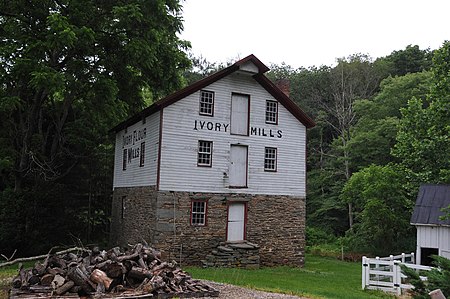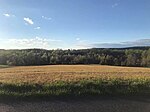Ivory Mills

Ivory Mills is a 14-acre (5.7 ha), historic grist mill complex located at White Hall, Harford County, Maryland, United States. It consists of six standing 19th century frame buildings and structures: mill, miller's house, barn, corn crib, carriage house, and chicken house. The property also includes the ruins of a stone spring house, and the stone abutments of a frame, Federal-era covered bridge. The focus of the complex is the three-story stone and frame mill building built circa 1818. The ground story is constructed of coursed stone rubble, and the upper stories from clapboard. The family first started a mill on this site in 1781; this particular mill ceased production in the 1920s.Ivory Mills was listed on the National Register of Historic Places in 1997.
Excerpt from the Wikipedia article Ivory Mills (License: CC BY-SA 3.0, Authors, Images).Ivory Mills
Harford Creamery Road,
Geographical coordinates (GPS) Address Nearby Places Show on map
Geographical coordinates (GPS)
| Latitude | Longitude |
|---|---|
| N 39.674444444444 ° | E -76.5375 ° |
Address
Harford Creamery Road
Harford Creamery Road
Maryland, United States
Open on Google Maps






